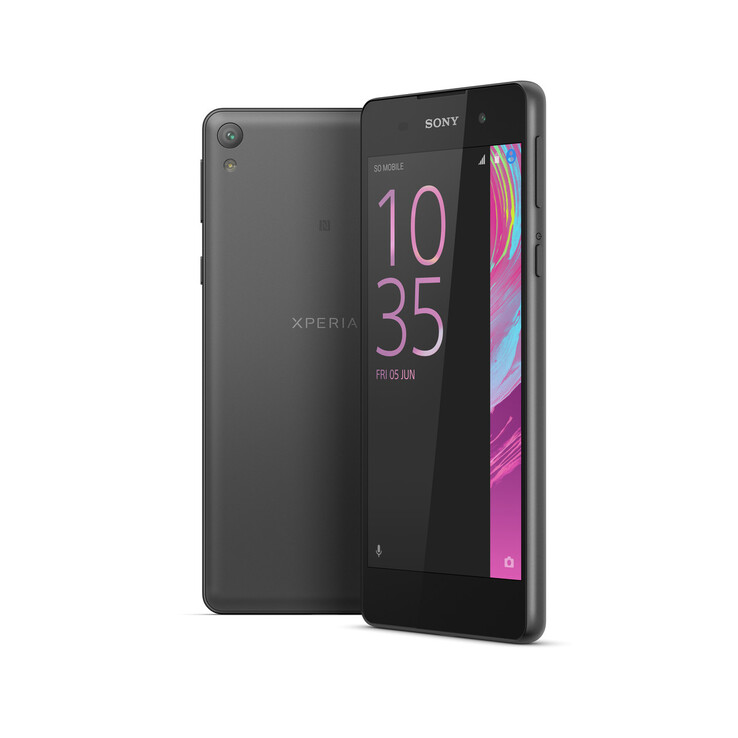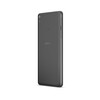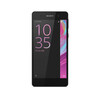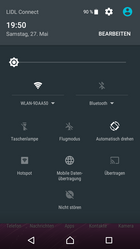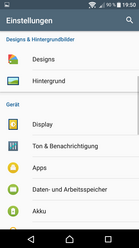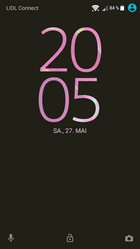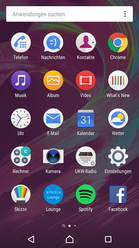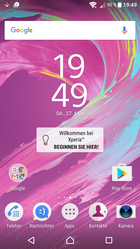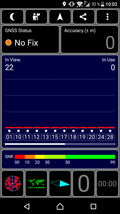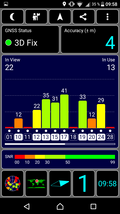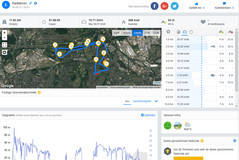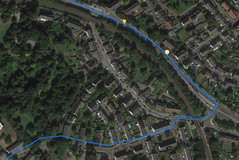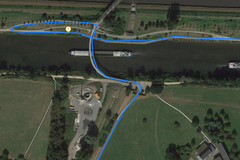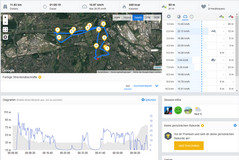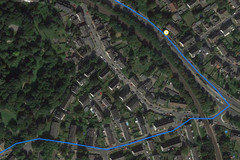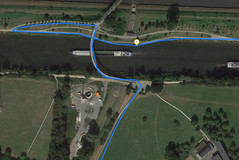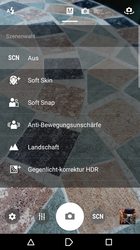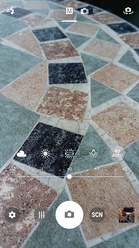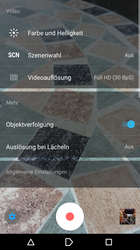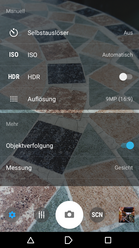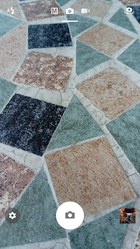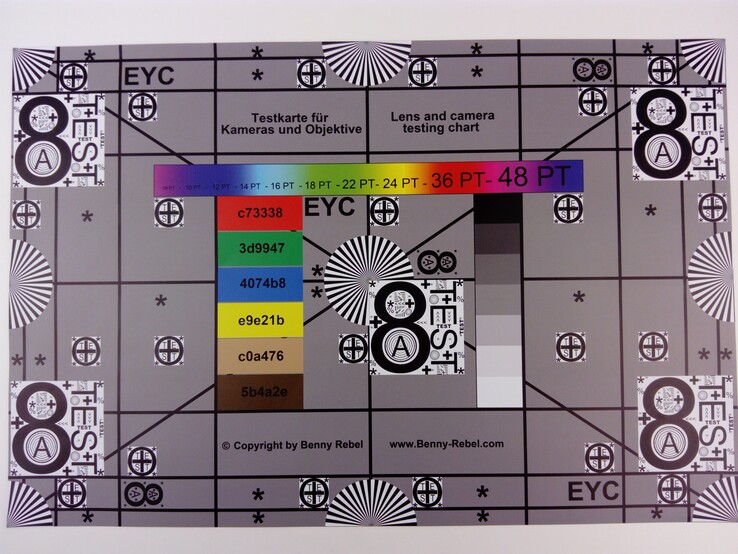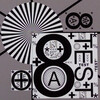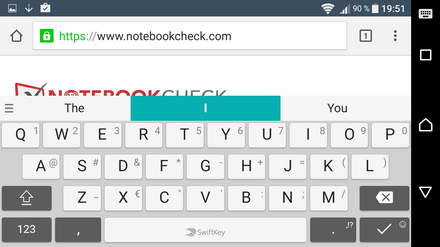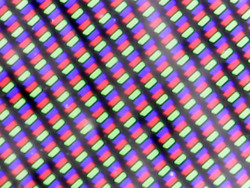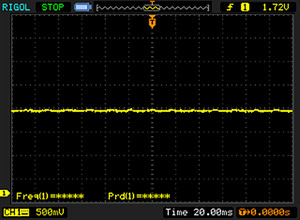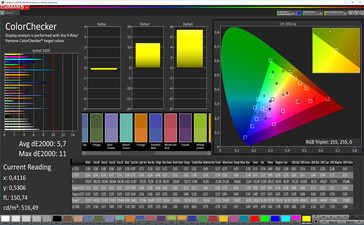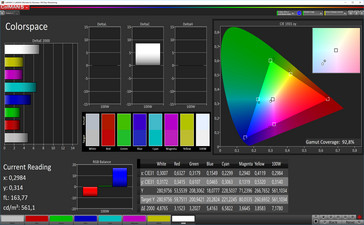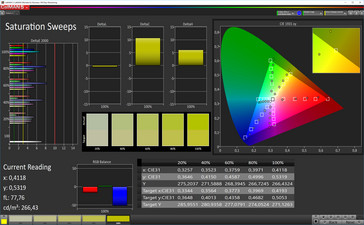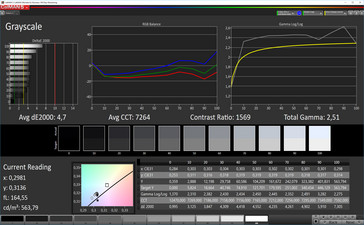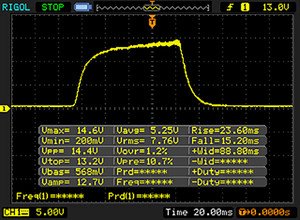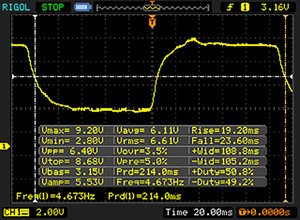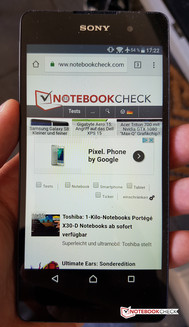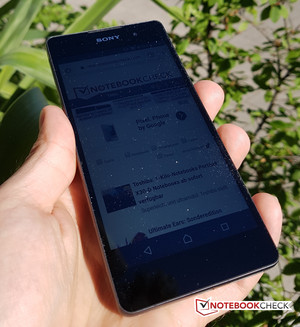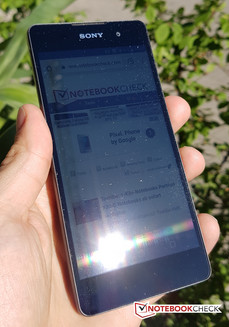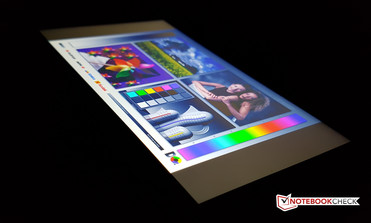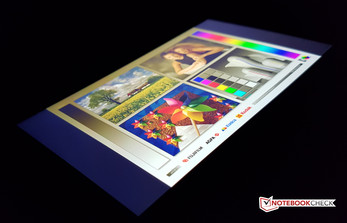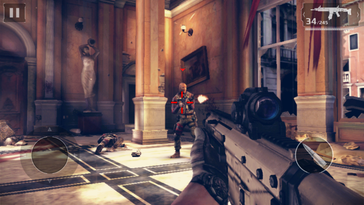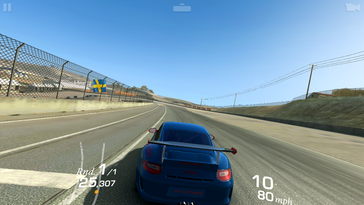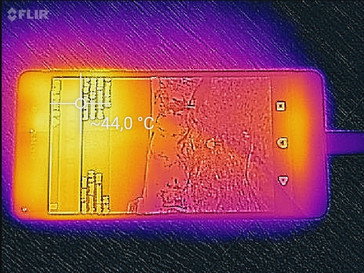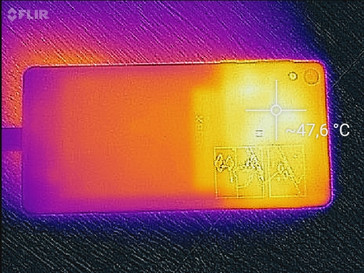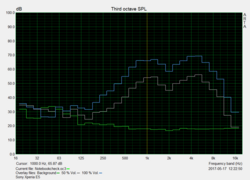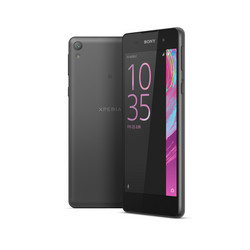Sony Xperia E5 Smartphone Review
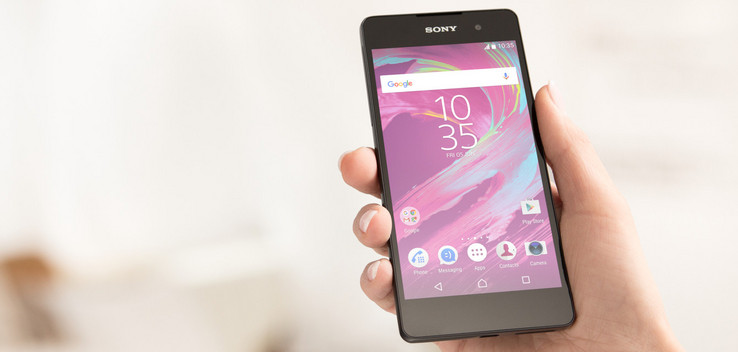
For the original German review, see here.
With the fifth generation of the E series, the Japanese electronics manufacturer extends its product portfolio by another entry model. For a current street price of about 130 Euros (~$145, in the US it is available for example from Wal-Mart for $179), the Sony Xperia E5 offers a MediaTek quad-core processor which is supported by 1.5 GB of RAM, an NFC chip, and a 13-MP main camera. The smartphone has 16 GB of internal storage.
The 5-inch single-SIM device is available in black or white color. There are many competitors in this price range, and imported smartphones in particular offer technical specs that are considerably better in some parts. Among them are the UMI Max and the Vernee Mars. But there are also entry models in the local market, such as the Acer Liquid Zest Plus, Coolpad Modena 2, Gigaset GS160, LG K8 2017, and ZTE Blade V7 Lite, that are competing models.
Case
With a size of 144 x 69 millimeters (~5.7 x 2.71 inches), the Xperia E5 is a compact device for current standards that lies in the hand comfortably. As is typical for Sony, the display bezels at the top and bottom are relatively large, which is reflected in a display to surface ratio of only 69%.
The workmanship and selection of materials are on a satisfactory level for an entry device. The back cover does not feel cheap by any means, but it does not advertise the quality of the UHANS S1 or Vernee Mars, which are made from glass and metal respectively. The key for volume adjustment and the on/off key on the right side of the device are made from plastic as well and offer a slightly spongy pressure point, although they are positioned well and can be reached easily.
Features
The 16 GB internal eMMC storage is appropriate for an entry device. After subtracting the operation system storage, about 10.6 GB remains available for the user. In addition, the storage can be extended by up to 200 GB via a microSD card, which can also be incorporated into the internal storage.
A micro USB 2.0 connector at the bottom of the device serves to charge the Xperia E5. Connecting external data storage via USB OTG does not work. Further features of the Sony smartphone include a status LED for notifications and an NFC chip and Miracast for wireless media-streaming. In our test with a Sony Android TV, transferring the display content to an external monitor works without problems.
Software
For the operating system, Sony bets on Google's Android version 6.0 and overlays it with its own manufacturer user interface. Since its appearance in summer of 2016, there was no update to the current Android 7 version until now. Seeing that the current security patch is on the level of September 2016, an update seems rather unlikely.
Even though compared to Google's stock Android, the system interface reworked by Sony shows some visual adjustments in particular in the settings menu and notification bar, it seems to closely follow vanilla Android. It is also positive that there are only few preinstalled apps and there is hardly any bloatware.
Communication and GPS
As we can also see in other devices in this price range, the integrated WLAN module of the Xperia E5 only masters the IEEE-802.11 a/b/g/n standards. At almost -40 dBm in close proximity to the router (Telekom Speedport, W921V), the damping is comparatively low for an entry device. The Wi-Fi transfer rates between the Xperia E5 and our Linksys EA 8500 reference router are in a typical range for entry level smartphones.
Thanks to LTE Cat. 4, the single-SIM smartphone accesses the Internet at up to 150 Mbit/s for downloads. All the LTE frequencies relevant in Germany as well as quad-band GSM and the UMTS frequencies of 850, 900, 1900, 1700, and 2100 MHz are supported. In addition, the Sony smartphone has version 4.1 of Bluetooth and an NFC chip for near field communication between mobile devices.
| Networking | |
| iperf3 transmit AX12 | |
| Samsung Galaxy S8 Plus | |
| UMI Max | |
| Sony Xperia E5 | |
| LG K8 2017 | |
| Coolpad Modena 2 | |
| Gigaset GS160 | |
| iperf3 receive AX12 | |
| Samsung Galaxy S8 Plus | |
| UMI Max | |
| Sony Xperia E5 | |
| LG K8 2017 | |
| Coolpad Modena 2 | |
| Gigaset GS160 | |
| iperf Server (receive) TCP 1 m | |
| Vernee Mars | |
| Acer Liquid Zest Plus | |
| iperf Client (transmit) TCP 1 m | |
| Acer Liquid Zest Plus | |
| Vernee Mars | |
An integrated GPS receiver enables the Sony smartphone to locate its position. Outdoors, the position is located with an accuracy of four meters. Indoors, the satellite signal was insufficient to locate the position.
In our practically relevant test where we record the route distance with the GPS module of the Xperia E5 and the Garmin Edge 500 bicycle computer in parallel, on the almost 12-km (~7.5 miles) route, the Sony smartphone shows a discrepancy of about 100 meters to the professional GPS reference device. The achieved accuracy is very good for an affordable device like the Xperia E5.
Telephone and Call Quality
In the test, we liked the call quality of the Xperia E5 very much. The caller is easily understandable and we were also understood clearly. The telephone app corresponds to a large extent to the standard Google telephone app. The user interface is simple and comprehensible.
Cameras
The camera module on the back of the Xperia E5 has a 13 MP resolution. In optimal light conditions, the pictures offer a good color reproduction rich in contrast. However, the white balance and richness of detail in the photos cannot convince. The sharpness achieved by the auto-focus is also not optimal. As soon as the light conditions worsen, the image starts to become noisy, and in sunny surroundings the camera shows problems with overexposure.
On the front of the device is a built-in 5-MP camera, the quality of which is satisfactory for selfies and video-calling. Overall, the pictures taken with the camera module turn out too dark. Videos can be recorded with the main camera as well as the front camera in 1080p quality at 30 images per second.
Accessories and Warranty
Besides the test device, the carton contains some short instructions, a modular power supply rated at 4.25 watts (5 V, 0.85 A), and a USB charging cable. Earphones are not included with the Xperia E5.
Sony offers a 24-month warranty for its entry-level smartphone. Please see our Guarantees, Return policies and Warranties FAQ for country-specific information.
Input Devices and Operation
Navigation of the device occurs through the usual Android onscreen keys for "Back," "Multitasking," and "Home." The capacitive multi-touchscreen reacts reliably to input with up to five fingers, which is implemented quickly and without long delays.
As input options, both the SoftKey and Google's stock Android keyboard are preinstalled.
Display
The LCD display of the Xperia E5 measures 12.7 cm (5-inches) in the diagonal and has a high-definition resolution (1280x720 pixels). With this, the IPS panel achieves a pixel density of 294 ppi, which should ensure a sufficiently sharp reproduction of the display content in everyday life. However, from a normal viewing distance, pixel structures are quite visible.
Displaying a pure white area, the liquid crystal display achieves an average brightness of 534 cd/m² and so is illuminated brighter than the competition. The minimum display brightness of the display is quite high at 50.2 cd/m². In addition, our test evaluates the brightness with an even distribution of bright and dark areas (APL-50). Here we could only measure a brightness of 451 cd/m².
| |||||||||||||||||||||||||
Brightness Distribution: 96 %
Center on Battery: 538 cd/m²
Contrast: 1630:1 (Black: 0.33 cd/m²)
ΔE ColorChecker Calman: 5.7 | ∀{0.5-29.43 Ø4.77}
ΔE Greyscale Calman: 4.7 | ∀{0.09-98 Ø5}
Gamma: 2.51
CCT: 7264 K
| Sony Xperia E5 IPS, 1280x720, 5" | LG K8 2017 IPS, 1280x720, 5" | Gigaset GS160 IPS, 1280x720, 5" | Vernee Mars IPS, 1920x1080, 5.5" | ZTE Blade V7 Lite IPS, 1280x720, 5" | Acer Liquid Zest Plus IPS, 1280x720, 5.5" | UMI Max IPS, 1920x1080, 5.5" | LG G6 IPS LCD, 2880x1440, 5.7" | |
|---|---|---|---|---|---|---|---|---|
| Screen | -34% | -37% | -9% | -26% | -30% | -10% | 18% | |
| Brightness middle (cd/m²) | 538 | 358 -33% | 489 -9% | 345 -36% | 312 -42% | 414 -23% | 522 -3% | 646 20% |
| Brightness (cd/m²) | 534 | 351 -34% | 479 -10% | 339 -37% | 302 -43% | 420 -21% | 498 -7% | 611 14% |
| Brightness Distribution (%) | 96 | 93 -3% | 95 -1% | 85 -11% | 79 -18% | 94 -2% | 86 -10% | 89 -7% |
| Black Level * (cd/m²) | 0.33 | 0.49 -48% | 0.55 -67% | 0.14 58% | 0.15 55% | 0.33 -0% | 0.23 30% | 0.23 30% |
| Contrast (:1) | 1630 | 731 -55% | 889 -45% | 2464 51% | 2080 28% | 1255 -23% | 2270 39% | 2809 72% |
| Colorchecker dE 2000 * | 5.7 | 7.1 -25% | 8.3 -46% | 7.1 -25% | 8.2 -44% | 8.1 -42% | 6.9 -21% | 4.5 21% |
| Colorchecker dE 2000 max. * | 11 | 14.9 -35% | 14.4 -31% | 13.9 -26% | 16.5 -50% | 13.8 -25% | 12.3 -12% | 8.3 25% |
| Greyscale dE 2000 * | 4.7 | 6.5 -38% | 8.7 -85% | 6.7 -43% | 9.2 -96% | 9.6 -104% | 9.2 -96% | 6 -28% |
| Gamma | 2.51 88% | 2.12 104% | 2.08 106% | 2.47 89% | 2.29 96% | 2 110% | 2.38 92% | 2.27 97% |
| CCT | 7264 89% | 8166 80% | 9034 72% | 7711 84% | 9017 72% | 7754 84% | 8687 75% | 7996 81% |
| Color Space (Percent of AdobeRGB 1998) (%) | 67.74 | |||||||
| Color Space (Percent of sRGB) (%) | 99.05 |
* ... smaller is better
Screen Flickering / PWM (Pulse-Width Modulation)
| Screen flickering / PWM not detected | |||
In comparison: 53 % of all tested devices do not use PWM to dim the display. If PWM was detected, an average of 8083 (minimum: 5 - maximum: 343500) Hz was measured. | |||
For an IPS panel, the contrast ratio (1630:1) as well as the black value (0.33 cd/m²) are merely a good average, falling into the middle of the field of competitors. In our practically relevant APL50 test, the black value of the panel slightly improved to 0.31 cd/m² at a contrast of 1455:1. The deviations in the color reproduction measured with the photo spectrometer and the CalMAN analysis software are relatively low, considering the cost of the device. In the bright areas, the grayscale also shows a barely visible blue tint, causing the image to appear slightly cool. The sRGB color-space coverage is very good.
Display Response Times
| ↔ Response Time Black to White | ||
|---|---|---|
| 38.8 ms ... rise ↗ and fall ↘ combined | ↗ 23.6 ms rise | |
| ↘ 15.2 ms fall | ||
| The screen shows slow response rates in our tests and will be unsatisfactory for gamers. In comparison, all tested devices range from 0.1 (minimum) to 240 (maximum) ms. » 96 % of all devices are better. This means that the measured response time is worse than the average of all tested devices (20.2 ms). | ||
| ↔ Response Time 50% Grey to 80% Grey | ||
| 42.8 ms ... rise ↗ and fall ↘ combined | ↗ 19.2 ms rise | |
| ↘ 23.6 ms fall | ||
| The screen shows slow response rates in our tests and will be unsatisfactory for gamers. In comparison, all tested devices range from 0.165 (minimum) to 636 (maximum) ms. » 70 % of all devices are better. This means that the measured response time is worse than the average of all tested devices (31.6 ms). | ||
Outdoors, the liquid crystal display is easily readable. On sunny days, the brightness and the contrast of the display are slightly too low to reliably allow easy reading of the content in direct sunlight. Thanks to IPS technology, the viewing-angle stability is very good. From very steep viewing angles, the image appears slightly darker and depending on the tilt of the display, a slight yellow or blue color inversion becomes visible.
Performance
The MediaTek MT6735 built into the Sony Xperia is an ARM SoC (System-on-a-Chip) with a clock speed of 1.3 GHz. The mid-range processor is manufactured in the 28-nm process and has four CPU cores based on the 64-bit capable Cortex A53 architecture. The CPU is supported by an ARM Mali T720 (MP1) graphics processor and 1.5 GB DDR3 RAM.
In everyday life, the performance ensures a smoothly running system and is very good for the MediaTek MT6735. There are hardly any stutters or hanging, and if there is, it is only during multitasking - Sony did a really good job here. Our subjective performance impression is confirmed by the benchmarks and browser performance. Compared to the MT6735 competition, the results of the Xperia E5 are very good. However, our Chinese Vernee Mars and UMi Max competitors offer the clearly better MediaTek SoC with the Helio P10 MT6755 and therefore also have correspondingly higher benchmark results.
The performance of the internal 16 GB eMMC storage while reading and writing data is in the higher range of the comparison values. The performance capabilities of the integrated microSD-card slot are above average for the price class as well. We checked its speed with our Toshiba Exceria Pro M401 reference storage card (max. read: 95 MB/s, write: 80 MB/s) and at 65 MB/s (read) and 46 MB/s (write), the access rates are above the competing devices. Only the LG K8 2017 offers even faster read and write rates.
| AnTuTu v6 - Total Score (sort by value) | |
| Sony Xperia E5 | |
| LG K8 2017 | |
| Gigaset GS160 | |
| Vernee Mars | |
| Coolpad Modena 2 | |
| ZTE Blade V7 Lite | |
| Acer Liquid Zest Plus | |
| UMI Max | |
| Geekbench 4.0 | |
| 64 Bit Single-Core Score (sort by value) | |
| Gigaset GS160 | |
| Vernee Mars | |
| Coolpad Modena 2 | |
| Acer Liquid Zest Plus | |
| UMI Max | |
| 64 Bit Multi-Core Score (sort by value) | |
| Gigaset GS160 | |
| Vernee Mars | |
| Coolpad Modena 2 | |
| Acer Liquid Zest Plus | |
| UMI Max | |
| Geekbench 4.4 | |
| 64 Bit Multi-Core Score (sort by value) | |
| Sony Xperia E5 | |
| LG K8 2017 | |
| 64 Bit Single-Core Score (sort by value) | |
| Sony Xperia E5 | |
| LG K8 2017 | |
| GFXBench (DX / GLBenchmark) 2.7 | |
| T-Rex Onscreen (sort by value) | |
| Sony Xperia E5 | |
| LG K8 2017 | |
| Gigaset GS160 | |
| Vernee Mars | |
| Coolpad Modena 2 | |
| ZTE Blade V7 Lite | |
| Acer Liquid Zest Plus | |
| UMI Max | |
| 1920x1080 T-Rex Offscreen (sort by value) | |
| Sony Xperia E5 | |
| LG K8 2017 | |
| Gigaset GS160 | |
| Vernee Mars | |
| Coolpad Modena 2 | |
| ZTE Blade V7 Lite | |
| Acer Liquid Zest Plus | |
| UMI Max | |
| GFXBench 3.0 | |
| on screen Manhattan Onscreen OGL (sort by value) | |
| Sony Xperia E5 | |
| LG K8 2017 | |
| Gigaset GS160 | |
| Vernee Mars | |
| Coolpad Modena 2 | |
| ZTE Blade V7 Lite | |
| Acer Liquid Zest Plus | |
| UMI Max | |
| 1920x1080 1080p Manhattan Offscreen (sort by value) | |
| Sony Xperia E5 | |
| LG K8 2017 | |
| Gigaset GS160 | |
| Vernee Mars | |
| Coolpad Modena 2 | |
| ZTE Blade V7 Lite | |
| Acer Liquid Zest Plus | |
| UMI Max | |
| GFXBench 3.1 | |
| on screen Manhattan ES 3.1 Onscreen (sort by value) | |
| Sony Xperia E5 | |
| LG K8 2017 | |
| Gigaset GS160 | |
| Vernee Mars | |
| Coolpad Modena 2 | |
| ZTE Blade V7 Lite | |
| Acer Liquid Zest Plus | |
| UMI Max | |
| 1920x1080 Manhattan ES 3.1 Offscreen (sort by value) | |
| Sony Xperia E5 | |
| LG K8 2017 | |
| Gigaset GS160 | |
| Vernee Mars | |
| Coolpad Modena 2 | |
| ZTE Blade V7 Lite | |
| Acer Liquid Zest Plus | |
| UMI Max | |
| PCMark for Android - Work performance score (sort by value) | |
| Sony Xperia E5 | |
| LG K8 2017 | |
| Gigaset GS160 | |
| Vernee Mars | |
| Coolpad Modena 2 | |
| Acer Liquid Zest Plus | |
| UMI Max | |
| JetStream 1.1 - Total Score (sort by value) | |
| Sony Xperia E5 | |
| LG K8 2017 | |
| Gigaset GS160 | |
| Vernee Mars | |
| Coolpad Modena 2 | |
| ZTE Blade V7 Lite | |
| Acer Liquid Zest Plus | |
| UMI Max | |
| Octane V2 - Total Score (sort by value) | |
| Sony Xperia E5 | |
| LG K8 2017 | |
| Gigaset GS160 | |
| Vernee Mars | |
| Coolpad Modena 2 | |
| ZTE Blade V7 Lite | |
| Acer Liquid Zest Plus | |
| UMI Max | |
| Mozilla Kraken 1.1 - Total (sort by value) | |
| Sony Xperia E5 | |
| LG K8 2017 | |
| Gigaset GS160 | |
| Vernee Mars | |
| Coolpad Modena 2 | |
| ZTE Blade V7 Lite | |
| Acer Liquid Zest Plus | |
| UMI Max | |
* ... smaller is better
Games
Besides OpenGL ES 3.1, the Mali-T720 graphics unit also masters OpenCL 1.1 and DirectX 11. However, the MP1 variant inside the Xperia E5 is only scaled by a single cluster which clocks at 600 MHz. 3D games from the Android Play Store that are more extravagant cannot be played smoothly. During the Modern Combat 5 and Real Racing 3 game titles we tested, there was repeated stuttering and long loading times were the rule. The touchscreen and position sensor worked well in the test.
Emissions
Temperature
During load, the back and the front of the Xperia E5 warm up unevenly. While in the test we measure a maximum of 44 °C (111 °F) in the front, the back has a slightly higher maximum surface temperature of 45.6 °C (114 °F). The temperatures that develop under load can be clearly felt in everyday operation, in particular in the bottom third of the case.
(±) The maximum temperature on the upper side is 44 °C / 111 F, compared to the average of 35.2 °C / 95 F, ranging from 21.9 to 247 °C for the class Smartphone.
(-) The bottom heats up to a maximum of 45.6 °C / 114 F, compared to the average of 34 °C / 93 F
(+) In idle usage, the average temperature for the upper side is 31.6 °C / 89 F, compared to the device average of 32.9 °C / 91 F.
Speaker
The speaker on the bottom of the case only achieves a maximum volume of 77 dB(A) in our test. With that, the mono speaker is not really the most powerful in the smartphone segment, although the volume is sufficient for everyday life.
The Xperia E5 cannot really score with sound quality in the test: at higher volumes the sound becomes tinny and distorted. As expected, the sound image is not very linear and overemphasizes the highs. The pink-noise diagram shows that lower frequencies are barely audible.
For a reproduction with more bass, you can use the 3.5 mm connector. Earphones are not included with the phone.
Sony Xperia E5 audio analysis
(±) | speaker loudness is average but good (76.5 dB)
Bass 100 - 315 Hz
(-) | nearly no bass - on average 21.6% lower than median
(±) | linearity of bass is average (8.1% delta to prev. frequency)
Mids 400 - 2000 Hz
(±) | higher mids - on average 5.5% higher than median
(±) | linearity of mids is average (9.6% delta to prev. frequency)
Highs 2 - 16 kHz
(±) | higher highs - on average 6.5% higher than median
(±) | linearity of highs is average (9.5% delta to prev. frequency)
Overall 100 - 16.000 Hz
(-) | overall sound is not linear (30.1% difference to median)
Compared to same class
» 78% of all tested devices in this class were better, 3% similar, 18% worse
» The best had a delta of 11%, average was 35%, worst was 134%
Compared to all devices tested
» 88% of all tested devices were better, 3% similar, 9% worse
» The best had a delta of 4%, average was 24%, worst was 134%
Coolpad Modena 2 audio analysis
(+) | speakers can play relatively loud (86.1 dB)
Bass 100 - 315 Hz
(-) | nearly no bass - on average 40.6% lower than median
(±) | linearity of bass is average (7.6% delta to prev. frequency)
Mids 400 - 2000 Hz
(±) | reduced mids - on average 7.4% lower than median
(±) | linearity of mids is average (9.2% delta to prev. frequency)
Highs 2 - 16 kHz
(±) | higher highs - on average 5.8% higher than median
(+) | highs are linear (2.2% delta to prev. frequency)
Overall 100 - 16.000 Hz
(-) | overall sound is not linear (30.4% difference to median)
Compared to same class
» 79% of all tested devices in this class were better, 4% similar, 17% worse
» The best had a delta of 11%, average was 35%, worst was 134%
Compared to all devices tested
» 88% of all tested devices were better, 3% similar, 9% worse
» The best had a delta of 4%, average was 24%, worst was 134%
LG K8 2017 audio analysis
(+) | speakers can play relatively loud (85.6 dB)
Bass 100 - 315 Hz
(-) | nearly no bass - on average 38.8% lower than median
(+) | bass is linear (3% delta to prev. frequency)
Mids 400 - 2000 Hz
(±) | reduced mids - on average 13.2% lower than median
(±) | linearity of mids is average (14.1% delta to prev. frequency)
Highs 2 - 16 kHz
(±) | higher highs - on average 5.1% higher than median
(+) | highs are linear (3.5% delta to prev. frequency)
Overall 100 - 16.000 Hz
(-) | overall sound is not linear (34.9% difference to median)
Compared to same class
» 85% of all tested devices in this class were better, 1% similar, 14% worse
» The best had a delta of 11%, average was 35%, worst was 134%
Compared to all devices tested
» 93% of all tested devices were better, 1% similar, 6% worse
» The best had a delta of 4%, average was 24%, worst was 134%
Frequency diagram in comparison (checkboxes above can be checked/unchecked!)
Battery Life
Power Consumption
In our measurement of the power consumption, the Xperia E5 is relatively inefficient. Compared to the UMi Max, the power consumption is clearly higher despite the smaller display and weaker processor.
| Off / Standby | |
| Idle | |
| Load |
|
Key:
min: | |
| Sony Xperia E5 2300 mAh | LG K8 2017 2500 mAh | Gigaset GS160 2500 mAh | Vernee Mars 3000 mAh | Coolpad Modena 2 2500 mAh | ZTE Blade V7 Lite 2500 mAh | Acer Liquid Zest Plus 5000 mAh | UMI Max 4000 mAh | |
|---|---|---|---|---|---|---|---|---|
| Power Consumption | 28% | 19% | 2% | 8% | 34% | 12% | 27% | |
| Idle Minimum * (Watt) | 1.03 | 0.65 37% | 0.56 46% | 1.02 1% | 0.64 38% | 0.63 39% | 0.83 19% | 1.02 1% |
| Idle Average * (Watt) | 2.06 | 1.6 22% | 1.7 17% | 1.69 18% | 1.96 5% | 1.37 33% | 2.06 -0% | 1.53 26% |
| Idle Maximum * (Watt) | 2.12 | 1.62 24% | 1.75 17% | 1.82 14% | 1.98 7% | 1.71 19% | 2.08 2% | 1.62 24% |
| Load Average * (Watt) | 5.01 | 2.97 41% | 4.17 17% | 4.39 12% | 4.99 -0% | 2.82 44% | 3.53 30% | 2.91 42% |
| Load Maximum * (Watt) | 5.04 | 4.34 14% | 5.07 -1% | 6.79 -35% | 5.48 -9% | 3.36 33% | 4.49 11% | 2.93 42% |
* ... smaller is better
Battery Life
At 7 hours and 2 minutes in our WLAN test with an adjusted display brightness of 150 cd/m², the inefficient power consumption of the Sony smartphone prevents a very good result. Considering the nominal capacity of 2300 mAh of the lithium-polymer battery, the Xperia E5 should last considerably longer compared to the runtime of the LG K8 (2017) in light of the built-in hardware.
| Sony Xperia E5 2300 mAh | LG K8 2017 2500 mAh | Gigaset GS160 2500 mAh | Vernee Mars 3000 mAh | Coolpad Modena 2 2500 mAh | ZTE Blade V7 Lite 2500 mAh | Acer Liquid Zest Plus 5000 mAh | UMI Max 4000 mAh | |
|---|---|---|---|---|---|---|---|---|
| Battery runtime | ||||||||
| WiFi v1.3 (h) | 7 | 9.9 41% | 10.3 47% | 7.1 1% | 8.6 23% | 8.6 23% | 13.6 94% | 9.8 40% |
Pros
Cons
Verdict
In our test, the Sony entry model scores with a high-contrast IPS HD panel and handiness. The Xperia E5 is well-built but only offers a plastic case that appears thin, although it feels okay. The competition that is made from glass (UHANS S1) or metal (Vernee Mars) has a clearly higher-quality appearance.
The interaction between the low-performance MediaTek quad-core SoC and 1.5 GB RAM ensures a (surprisingly) fluid system performance in everyday life, and thanks to the relatively fast 16 GB eMMC storage, the apps open without too long load times. In addition, the GPS module of the Xperia E5 is very exact for its price class.
We comment negatively that due to the comparatively high power consumption and waste heat development, the runtimes of the Sony smartphone are below average compared to the competition. Moreover, the quality of the camera module and speaker are not very compelling.
The Xperia E5 is a solid everyday companion of the lower price segment. However, the fancy glass design of higher-priced Xperia smartphones typical for Sony would have benefited the entry device as a unique feature.
Sony Xperia E5
- 06/06/2017 v6 (old)
Marcus Herbrich


